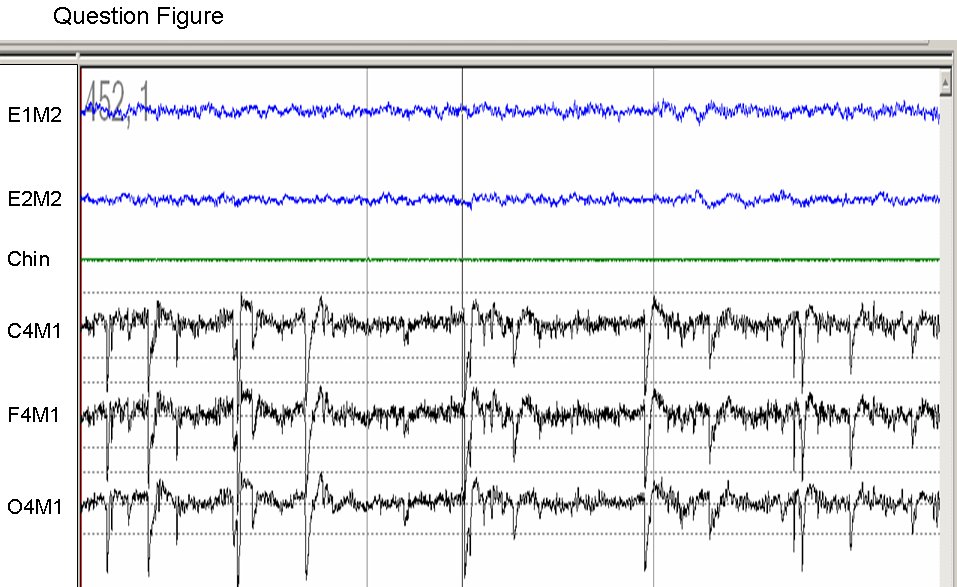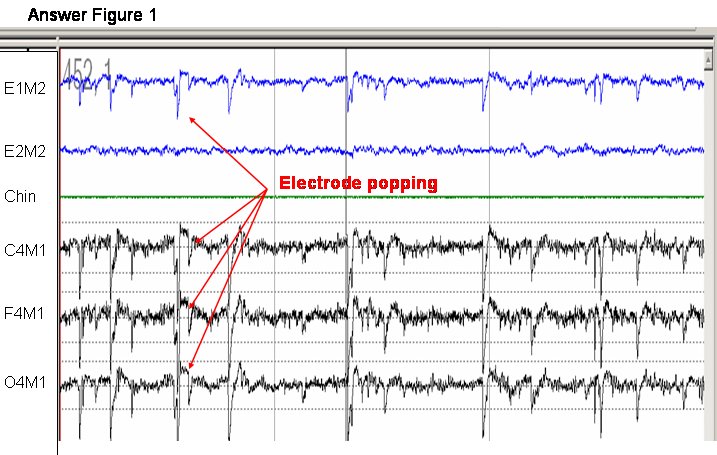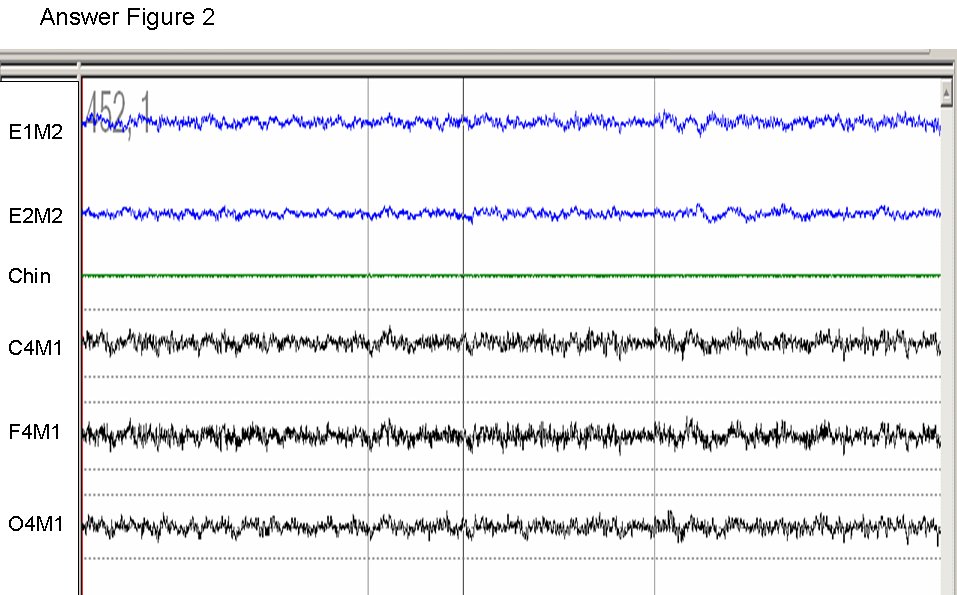Contributed by James A. Rowley, MD, Wayne State University, Detroit, MI
The electrode popping artifact seen in the F4, C4 and O4 EEG channels is secondary to a problem with the M1 (left mastoid) electrode. Note that the artifact is not seen in the E1 (left) and E2 (right) EOG channels, both of which are referenced to M2 (right mastoid). Note in the figure below, that when the E1 channel is referenced to M1, the popping artifact is noted, confirming that the M1 electrode is responsible for the artifact.
Electrode popping is usually recognized as a sharp negative or positive wave that does not conform to the usual appearance of vertex waves or K-complexes, both of which begin with a sharp deflection. Electrode popping has several potential causes:
- Pressure or pull on the electrode
- Inadequate application of electrode with poor skin contact
- Drying of the electrode
- Dirty electrodes.
Electrode popping is usually eliminated by changing/re-applying the electrode. In this example, re-referencing the EEG leads to M2 would also eliminate the artifact (see Figure).
Reference
- Beine B. Troubleshooting and elimination of artifact in polysomnography. Respir Care Clin 2005; 11:617






